
NPS photo Throughout their life cycle, amphibians live on both land and water. Young are usually born in water and spend the early part of their life cycle there. As they grow, their bodies change through a process called metamorphosis. Gills necessary for breathing in water transform into air-breathing lungs, and young amphibians lose their aquatic tail in favor of strong legs for swimming and jumping. Now these juveniles are ready to live on the land! The Sonoran Desert is dry and very hot – not a place where one might expect wet-skinned amphibians! Torrents of summer monsoon rain summon toads from their underground burrows where they spend most of the year. On July nights, hundreds of toads can be found breeding in temporary pools. Saguaro National Park amphibians include Couch's spadefoot, leopard frogs, and the canyon treefrogs which live year-round in small water sources such as rock pools and springs. 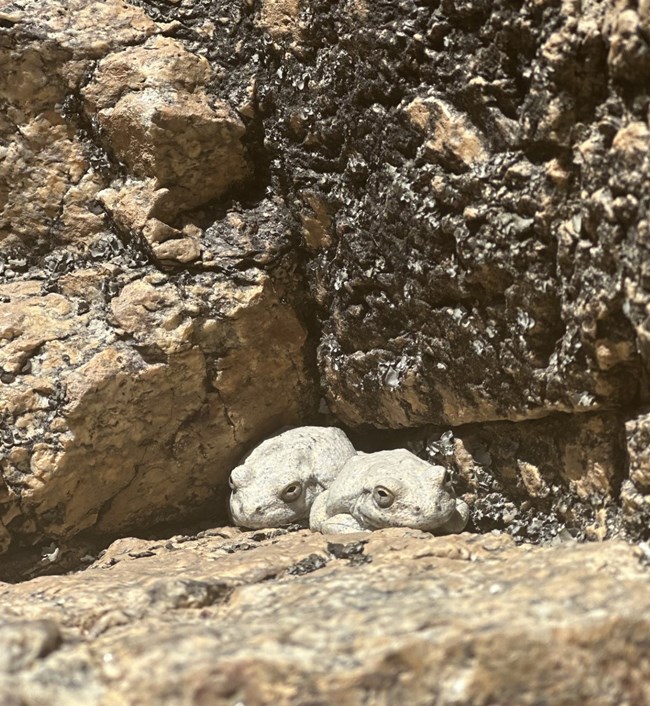
NPS Photo / T. Wiewel Canyon Treefrog (Hyla arenicolor)This small treefrog has variable pattern and color which allow it to match the color of its background extremely well. Restricted to riparian areas (those among streambeds) in rocky canyons, the canyon treefrog is often found in groups among boulders, to which it clings using its large adhesive toepads. They avoid predators using their natural camouflage and by limiting movement to when a predator comes near. 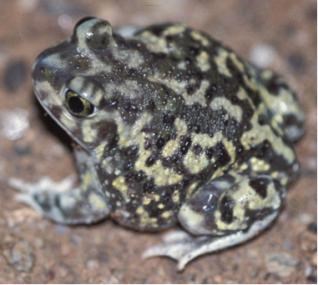
NPS Photo Couch’s Spadefoot (Scaphiopus couchii)Couch’s spadefoot spends most of the year several feet underground in a dormant state protected from extreme temperatures and dryness. During summer rainstorms, the sound of thunder and rain prompts them to leave their burrows. Once above ground, they immediately start to feed, often choosing termites that also emerge during the summer rains. This might be the spadefoot’s only chance to eat until the next summer! If the storms produce enough water, they will also search for a mate (the male’s sheep-like call attracts the females), breed, and lay eggs in temporary pools and puddles. Adapted to an environment in which pools of water are short-lived, spadefoot eggs hatch in in about 15 hours, and tadpoles can develop into toadlets in as few as 9 days! 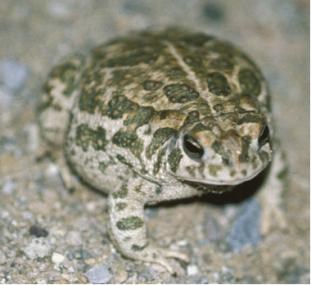
NPS Photo Great Plains Toad (Bufo cognatus)This toad is most easily recognizable by paired blotches on its back and a white dorsal stripe. Like most desert toads, they become active during the summer rainy season. The male’s call is an explosive clatter lasting up to a minute. 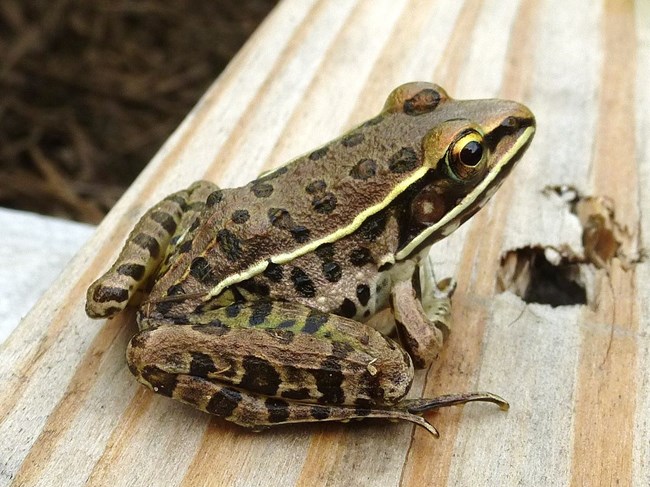
NPS Photo Lowland Leopard Frog (Rana yavapaiensis)In the Sonoran Desert, lowland leopard frogs inhabit places with permanent water such as canyon pools and streams. This aquatic species often jumps into the water to escape capture. They breed year-round, and tadpoles take a year or more to reach adulthood. Lowland leopard frogs are a species of special concern at Saguaro National Park, as prolonged drought has caused pools that once held frogs to go dry. 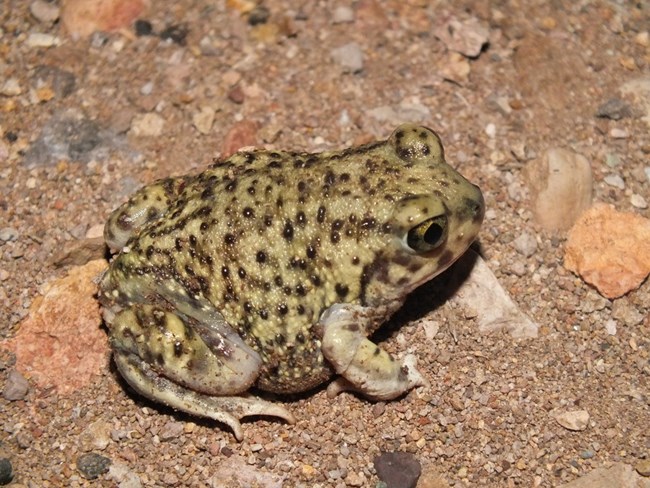
NPS Photo Mexican Spadefoot (Spea multiplicata)Similar in habit to Couch’s spadefoot, the Mexican spadefoot is active during the summer rainy season. They are brownish-gray in color with scattered dark blotches and red bumps. When handled, they emit a skin secretion with a peanut-like odor which may cause the handler’s eyes and nose to run. The call of the Mexican spadefoot has been described as the sound a fingernail makes when dragged along the teeth of a comb. 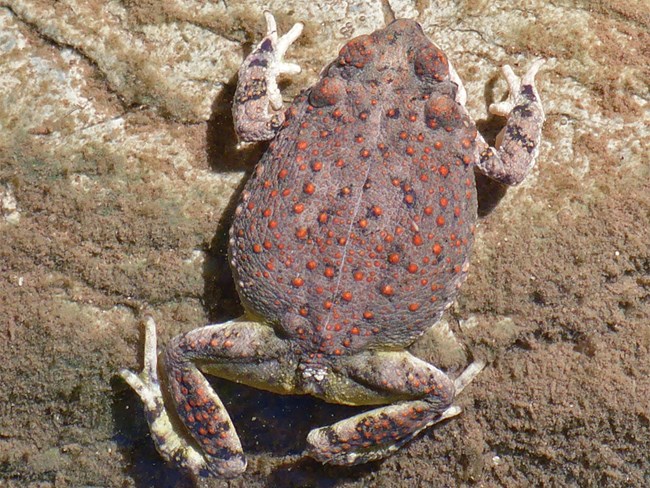
NPS Photo Red-spotted Toad (Bufo punctatus)This small toad is easily identified by its round parotoid glands (directly behind the eye) and scattered red bumps. The male’s call is a high pitched trill, something like that of a cricket, and can be heard during rainy summer nights. This is the only toad species in the Sonoran Desert that lays eggs singly. 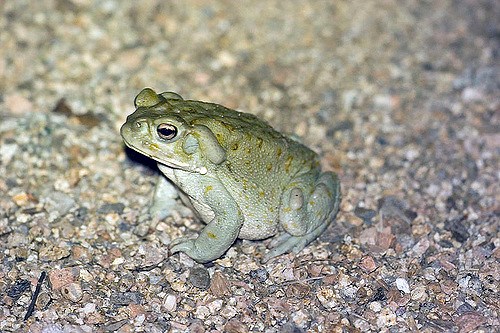
NPS Photo Sonoran Desert Toad (Bufo alvarius)The Sonoran Desert toad, previously known as the Colorado River toad, is one of the largest toads native to North America. They have relatively smooth olive-green skin with huge parotoid glands behind each eye and several large warts on their hind legs. When disturbed, the parotoid glands secrete toxins as a defense. Dogs that mouth the toads can become temporarily paralyzed and sometimes die if not treated immediately. |
Last updated: May 5, 2025
